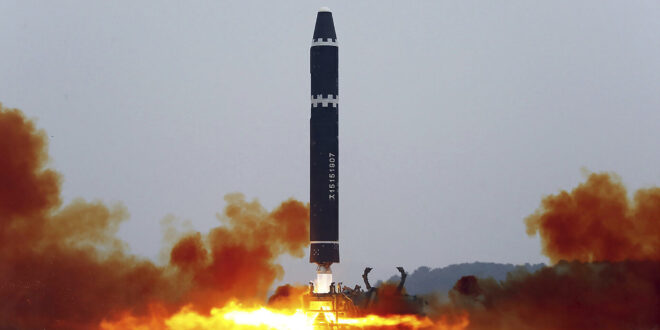North Korea said Sunday that its latest intercontinental ballistic missile test was intended to bolster its “fatal” nuclear attack capability against its adversaries, as it threatened more drastic measures in response to planned military training between the US and South Korea.
Saturday’s ICBM test, the North’s first since January 1, indicates that it is taking advantage of its rivals’ drills to increase its nuclear capability and leverage in future dealings with the US. According to one expert, North Korea may seek to conduct regular operational exercises involving its ICBMs.
According to North Korea’s official Korean Central News Agency, the existing Hwasong-15 ICBM launch was organized “suddenly” and without prior notice on Saturday at dawn, at the direct order of leader Kim Jong Un.
According to KCNA, the launch was intended to test the weapon’s reliability and the country’s nuclear force’s combat readiness. The missile was fired at a high angle and reached a maximum altitude of about 5,770 kilometers (3,585 miles), flying a distance of about 990 kilometers (615 miles) before hitting a pre-set area in the waters between the Korean Peninsula and Japan, according to the report.
The steep-angle launch appeared to be intended to avoid neighboring countries. The flight details reported by North Korea corresponded to the launch details previously assessed by its neighbors, indicating that the weapon can theoretically reach the mainland United States if fired on a standard trajectory.
The North’s “powerful physical nuclear deterrent” and efforts to “turn its capacity of fatal nuclear counterattack on hostile forces” into a powerful one that cannot be countered, according to KCNA, were demonstrated by the Hwasong-15 launch.
 India One News
India One News





